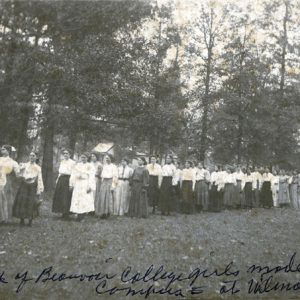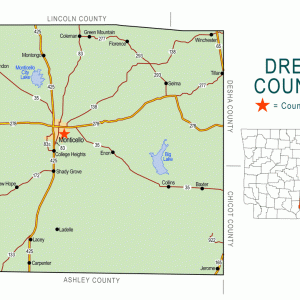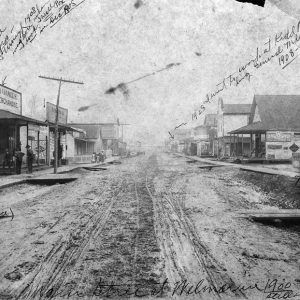calsfoundation@cals.org
Wilmar (Drew County)
| Latitude and Longitude: | 33°37’44″N 091°55’53″W |
| Elevation: | 154 feet |
| Area: | 1.53 square miles (2020 Census) |
| Population: | 395 (2020 Census) |
| Incorporation Date: | March 8, 1899 |
Historical Population as per the U.S. Census:
|
1810 |
1820 |
1830 |
1840 |
1850 |
1860 |
1870 |
1880 |
1890 |
1900 |
|
– |
– |
– |
– |
– |
– |
– |
– |
– |
844 |
|
1910 |
1920 |
1930 |
1940 |
1950 |
1960 |
1970 |
1980 |
1990 |
2000 |
|
929 |
1,034 |
627 |
695 |
746 |
718 |
653 |
747 |
637 |
571 |
|
2010 |
2020 |
|
|
|
|
|
|
|
|
|
511 |
395 |
|
|
|
|
|
|
|
|
The city of Wilmar, in western Drew County, was once home to a school known as Beauvoir College. A center of the southern Arkansas timber industry, Wilmar flourished in the early part of the twentieth century but is now mostly a suburb of Monticello (Drew County), the county seat. The community is well known for its June Dinner, one of the oldest Juneteenth celebrations in Arkansas; having started in the nineteenth century, it attracts thousands of attendees each year.
The history of Wilmar is generally said to begin with James Thomas Dionysius Anderson, who bought 700 acres of land in Drew County for a dollar an acre in 1859. Earlier landowners in the area were Andrew Govan, who purchased his land in 1848, and Collins Hemingway, a landowner since 1856. Anderson cleared five acres of land and planted corn, which was tended by five slaves: Simon and Lizza Taylor, Virginia and Wealthy Thurman, and Gill Gordon. A Presbyterian church was built near Anderson’s land in 1861. He continued to tend his farmland after the Civil War and married Elizabeth Eliza Bird in 1869. He built a sawmill in 1881 and opened a post office in 1884, naming it Wilmar to honor his oldest daughter, Willie Elvira Anderson. Competitors built sawmills in 1887 and 1890, and a stave mill was built in 1898. A Methodist church was organized in 1893. The city of Wilmar was incorporated in 1899.
Two teen brothers, William and Henry Beavers, were lynched in the area two years apart, in 1890 and 1892. Each of them was accused of assaulting a white woman.
In the early twentieth century, the timber industry was flourishing in southern Arkansas, aided by the construction of railroads through the area. The Wilmar and Saline Valley Railroad was chartered in 1904 to carry lumber harvested by the Gates Lumber Company, established in Wilmar in 1890. By 1907, the company railroad owned twenty-five miles of track, four locomotives, fifty-five log cars, and two log loaders. The railroad interchanged cars with the Iron Mountain railroad (later the Missouri Pacific Railroad) at the Gates sawmill in Wilmar. Logging and railroad equipment was transferred by the Gates Company to Crossett (Ashley County) in the late 1920s after the logging industry in the Wilmar area had significantly declined.
In 1897, John Jefferson Lee Spence established a college in Wilmar. For its first six years, it was called the Drew Normal Institute, but it was chartered as Beauvoir College in 1903. The school was built on land donated by Anderson and by his brother-in-law, Ilrey A. Bird, who served as Drew County judge from 1898 to 1902. The school prospered for a few years, but a smallpox epidemic in 1905, followed by a financial crisis in 1907, led to its closing. Many of its resources were transferred to the Fourth District State Agricultural School, now the University of Arkansas at Monticello (UAM), which was created by the Arkansas General Assembly in 1909.
In 1915, Wilmar was home to two baseball teams. One team, with white players, was part of the South East Arkansas League, which also had teams in Monticello, Dermott (Chicot County), and Warren (Bradley County). The Wilmar team won half of the thirty-six games it played that year. At the same time, an African-American team from Wilmar was also defeating opposing teams made up of African Americans from surrounding communities such as Monticello. The white and Black teams evidently both used Hudspeth Park in Wilmar, playing on alternate days of the week. A chapter of the Ku Klux Klan (KKK) was active in Wilmar in 1923.
The city of Wilmar declined with the fall of the timber industry and the onset of the Depression. Fortunes improved, however, with the development of the natural gas industry. A pipeline installed by the Arkansas-Louisiana Gas Company in 1928 was intended to connect supplies in northern Louisiana with customers in St. Louis, Missouri. This pipeline has been supplied since 1948 by the Wilmar Transmission Station, which includes the first turbine pump constructed on a natural gas pipeline in the United States. The pumping and distribution system based in Wilmar belongs to CenterPoint Energy.
In 2013, Wilmar had several churches, including Baptist, Missionary Baptist, African Methodist Episcopal (AME), United Methodist, and Israel of God. (The Presbyterian church disbanded in 1974, having only eight active members.) Children from Wilmar attend schools in Monticello, all of which are part of the Drew County Central School District. The population of Wilmar in 2010 was 511, of whom 134 were white and 364 were African American. The total population had fallen to 395 by 2020.
For additional information:
Boyd, William J., and David T. Hyatt Jr. “Drew County’s Role in Meeting Energy Needs.” Drew County Historical Journal 25 (2010): 10–13.
DeArmond, Rebecca. Old Times Not Forgotten: A History of Drew County. Little Rock: Rose Publishing, 1980.
Shea, William, and William F. Droessler. “A Nice Little League of Our Own: Baseball in 1915.” Drew County Historical Journal 16 (2001): 24–28.
Spence, William Tyler. “History of Beauvoir College.” Arkansas Historical Quarterly 17 (1958): 325–336.
Tedder, Russell. “The Ashley, Drew and Northern: Drew County’s Own Railroad.” Drew County Historical Journal 19 (2004): 4–25.
Steven Teske
Butler Center for Arkansas Studies
 Beauvoir College Students
Beauvoir College Students  Drew County Map
Drew County Map  Wilmar Street Scene
Wilmar Street Scene 



My family was born and raised in Wilmar, Arkansas, and I lived there until I was five. There is so much history I never knew about my hometown until I read this article. I’ve got to do better on learning my history and roots. Wow!!!
Sad historical facts.
I still don’t understand why southern whites were so evil to black human beings. I don’t understand how slave holders claimed to worship the True and Living Almighty God.
I don’t know how those whites could lynch someone else’s sons as if their lives were not worth the living. The fact is that many whites raped and took advantage of the black women and even young black boys as well who had no protection or voices; thus the many of us “mulatto” people. Interesting history.
My birthplace: Marianna, Arkansas.